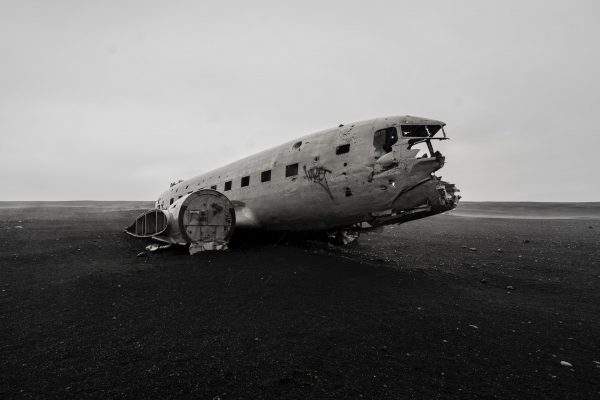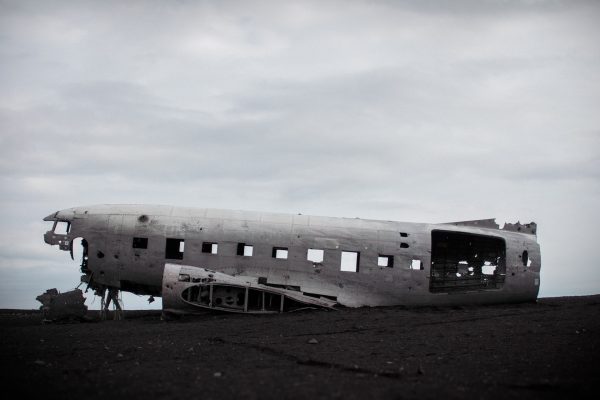The plane crash on the Sólheimasandur glacial outwash plain in South Iceland has been captured in numerous traveler photographs, a Bollywood film, multiple TV advertisements, and music videos, with the 2007 Sigur Rós documentary being one of its most renowned appearances. More recently, it was also featured in Justin Bieber’s “I’ll Show You” music video. The captivating scenery, consisting of a weathered gray plane wreckage and black sand, attracts thousands of tourists annually.

The Reason Behind the Plane Wreck on Sólheimasandur
The crash of a US Navy Douglas DC-3 on the Sólheimasandur glacial outwash plain in South Iceland took place on the afternoon of November 21, 1973, not November 24 as recorded by official US records. The exact cause of the crash remains a mystery, with theories suggesting a combination of human error, mechanical failure, running out of fuel, and a storm as the potential culprits. The most widely accepted explanation is that the plane crashed after running out of fuel during a storm, caused by the pilot accidentally switching to the wrong fuel tank. The DC-3 was returning to Keflavík from Höfn in Hornafjörður fjord, where it had been delivering equipment for the US Radar Station on Stokkses. The weather conditions during the flight were harsh, with temperatures dropping below -10°C (x°F), thick fog, and strong wind gusts with sleet and precipitation, which caused ice to form on the plane.
A Moon-like Surface and a Narrow Escape
The journey of the plane, captained by James Wicke and co-piloted by Gregory Fletcher, was met with intense storms and mechanical issues. Despite having limited experience, Fletcher took control when the engines failed and made the decision to head for an emergency landing on the sea instead of a mountainous terrain. When the plane descended through the clouds, the crew was shocked to find themselves flying over a seemingly lunar landscape. In an incredible feat, Fletcher managed to make an emergency landing on the frozen beach, stopping just 18 feet from the crashing waves of the ocean. Miraculously, all five crew members emerged unscathed from the crash, although the plane was badly damaged.
Left to Rust on the Beach
The crew quickly evacuated the plane, fearing it might catch fire due to damage to the fuel tanks during the crash. They only took with them the first-aid kit and a WWII-era radio. A distress call had been picked up by a Hercules transport en route from Europe to Keflavík, and a rescue operation was underway when the crash occurred. The crew waited just an hour before being airlifted back to Keflavík by a US rescue chopper.
The US Navy deemed it too difficult to recover the plane from the crash site on the barren beach, located about 2.5 miles from the nearest road. After stripping the plane of any valuable items, the empty husk was left on the sand and used as storage by the nearby farmer and as target practice by local hunters.
Fletcher was later recognized for his bravery and awarded an Air Medal Bronze Star for his successful emergency landing that saved the lives of the crew.
The Douglas C-117 plane that crashed on Sólheimasandur was one of the four Super DC-3s based at Keflavík Airport. It was part of the US Navy and Marine Corps during the Cold War and was used to monitor Soviet military movements in the North Atlantic. The plane was modified to improve its take-off and single engine performance, making it a Super DC-3, officially known as Douglas C-117. The four Dakotas that were based in Keflavík had previously served in the Korean and Vietnam wars and completed their service in Iceland, where the other three planes were damaged during take-off. The US Navy base at Keflavík was closed in 2006 after the US Navy left Iceland.
The walk takes approximately 1 hour each way, along a well-trodden path that is marked by metal poles in the ground. The path is relatively easy, although it can be slippery in some places and the strong wind that blows in the area can make the walk quite challenging. Visitors are advised to be prepared for the conditions and to bring adequate clothing, food, and water. Once you reach the site, you will see the remains of the plane, which is now weathered and rusted. There is no entry fee, and visitors are free to explore the site and take photographs.

Safety
In addition to the danger of getting lost in winter, the beach itself can be treacherous. The sand is black and can be very slippery, and strong waves can come crashing in without warning. Visitors should exercise caution and be mindful of their surroundings, especially during high tide or when the weather is bad. In some areas the beach is covered in large rocks, which can be difficult to navigate and pose a hazard. For these reasons, it is important to be prepared and to be aware of your own limitations when visiting Sólheimasandur and the plane wreck.
Location
